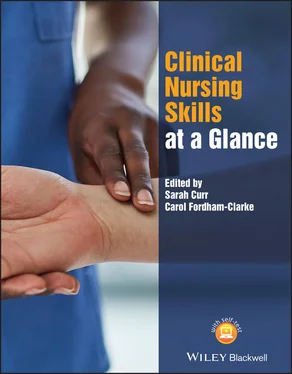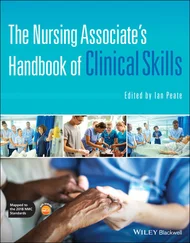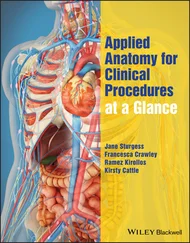Amy Dines
David Easton
James Gaydon
Courtney Woolgar
Secondly to Karen Fawkes and Tiago Horta Reis Da Silva who gave their time whenever asked. We are greatly appreciative.
To the team at Wiley, specifically Louise Barneston and Ashley Alliano, who supported us to get to publication.
Finally, to our friends and family, thank you for your endurance.
About the companion website
This book is accompanied by a companion website.
www.wiley.com/go/clinicalnursingskills
This website includes:
Scenarios
MCQs
1 Introduction: the setup of this book and how to use it
This book is separated into 12 key sections with each section related to a system of the body. The exceptions to this are Chapter 2(Principles of Skills) and Chapter 3(Mandatory Skills). The principles of skills highlight key considerations for your healthcare practice, with the mandatory skills focusing on key skills required prior to entering the clinical environment to ensure safe practice. As such, these sections are intended to be read first.
Within this book each page is presented in an easy‐to‐follow double‐page spread. This double page provides written content and tables, figures, and photos, which add a visual context and support.
The United Kingdom (UK) National Health Service Knowledge and Skills Framework (KSF) (NHS Employers 2019) was key in the development of this book due to its focus on the necessary knowledge and skills required to enable quality care provision. As such, each chapter provides both knowledge and skill, thereby ensuring an evidence‐based approach to each skill. Each chapter has a brief background section where knowledge is provided with guidance for the procedure. The skill is then outlined in the sections on influencing factors, equipment and procedure. Each chapter also has a red flags section for specific signs and concerns to look for as well as actions to take.
The skills in this book have the potential to be used for all healthcare professionals but there is a recognition that much of these skills will be undertaken by the nursing workforce. As such this book provides skills that align with the UK Nursing & Midwifery's Council (NMC) Standards of Proficiency for Registered Nurses (2018). Throughout the book, and weaved across each chapter, are the core platforms:
Being an accountable professional.
Promoting health and ill health.
Assessing need and planning care.
Providing and evaluating care.
Leading and managing care and working in teams.
Improving safety and quality of care.
Coordinating care.
We feel that whist skills have changed to incorporate the complex care delivery now required, these skills reflect commonly performed procedures in practice as well as those highlighted within the annex of the above publication (NMC 2018). We would also like to emphasise that all these skills require training and an assessment of competence and that this book is intended as a learning adjunct to clinical practice. Prior to performing each skill, you must have been assessed and deemed competent, thus having the necessary knowledge and skills to undertake the procedure.
Do use this book to inform your clinical practice, always ensuring that you use it whist following local and national policies and guidance. The purpose of this book is to provide a quick visual approach to essential healthcare skills and as such should be supplemented by material providing detailed theory underpinning the skills. However the knowledge gained within these chapters can be further consolidated within our online complementary package, which is available in www.wiley.com/go/clinicalnursingskills. This will test your knowledge through quizzes and case studies to ensure further preparedness for practice. Enjoy!
1 NHS Employers (2019) Simplified Knowledge and Skills Framework. https://www.nhsemployers.org/SimplifiedKSF(accessed 5 December 2020).
2 Nursing & Midwifery Council (2018). Standards of Proficiency for Registered Nurses. London: Nursing & Midwifery Council.
2 Care planning and the nursing process
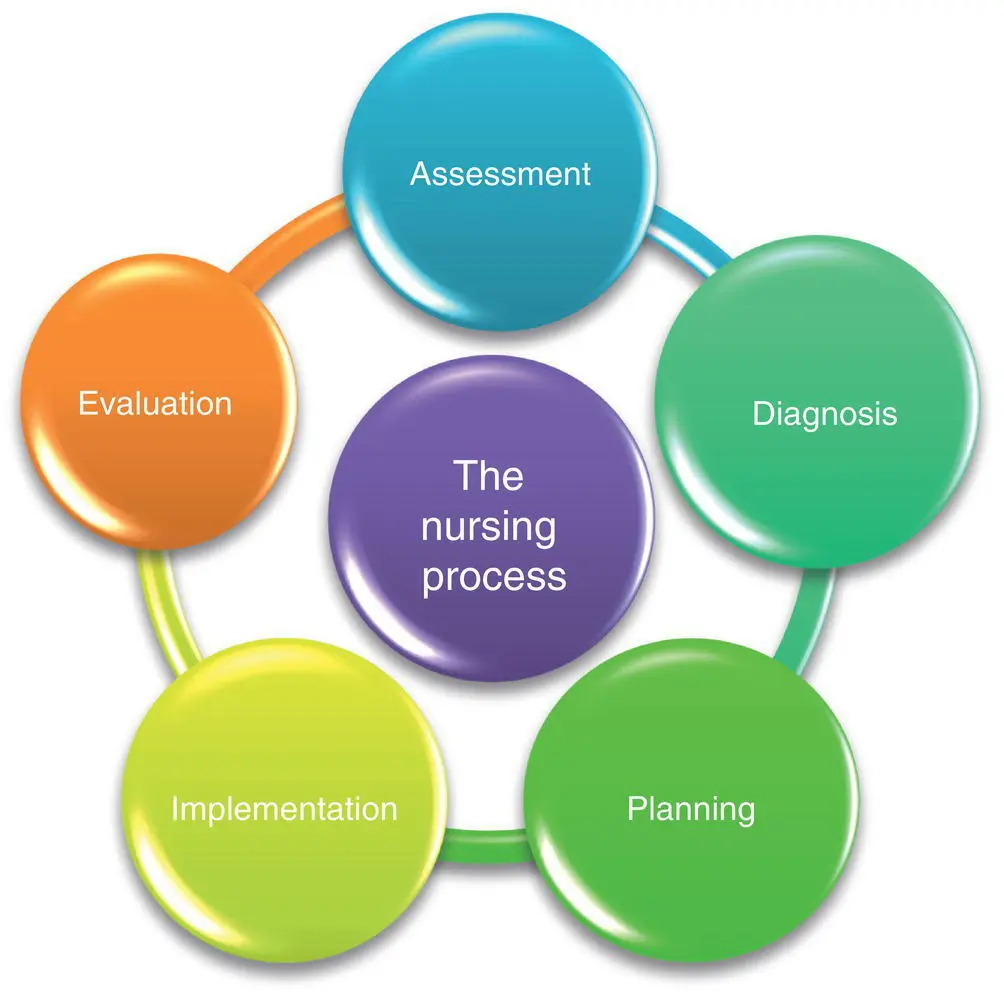
Figure 2.1 The nursing process.

Figure 2.2 Henderson's needs theory.
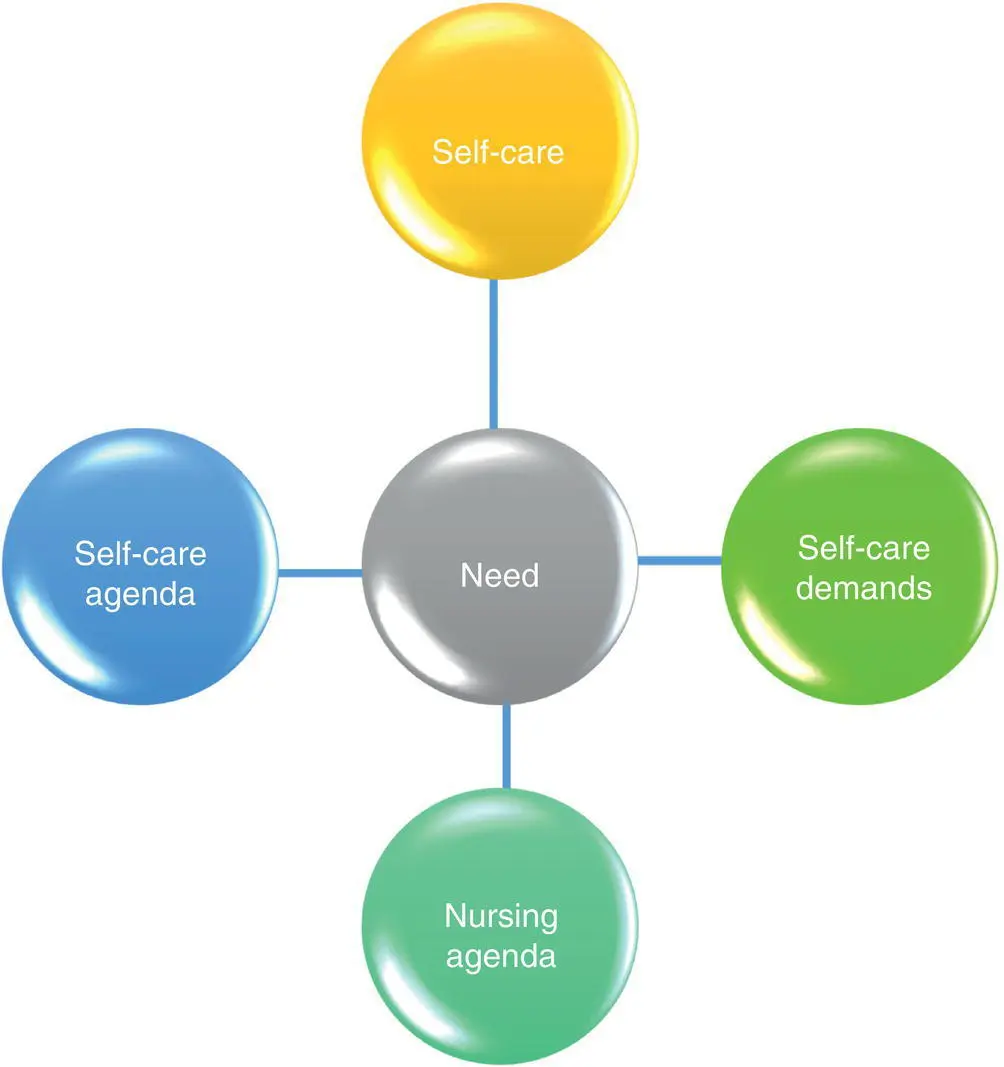
Figure 2.3 Orem's theory of self‐care deficit.

Figure 2.4 Activities of daily living.
Care planning has been a core component of health and social care for many years and was first introduced as part of the nursing process by Ida Jean Orlando (1961). This four‐stage process focused on the initial assessment, care planning, implementation, and then evaluation of the care delivery (Orlando 1961). This is intended as an ongoing, circular, activity ( Figure 2.1) until care is no longer required and the patient is discharged from the service.
Since its introduction, the nursing process has evolved, with diagnosis being added by Gebbie and Lavin in 1973. The term diagnosis in nursing has long been debated due to its medical undertones, with Levine coining the term “trophicognosis” (Levine 1965) to replace diagnosis. This is because the term means the art and knowledge of nursing (Levine 1965) and refers to the use of information from the assessment and our pre‐existing knowledge, which allows us to judge the need and thus create an individualised care plan.
Whichever the term used, the provision of individualised care is key to ensuring that high‐quality care that places the patient at the centre is delivered. This also involves recognising that care planning, where possible, should involve the patient and the healthcare professional working together to plan care and set goals that are both desirable and achievable (NHSE 2016).
When patients cannot be involved in the care planning, such as in an emergency or with unconscious patients, ensure that you act in their best interests. This will involve establishing if there is an advanced care plan or “living will”. You will also need to establish if legal power of attorney has been granted to an individual and to ensure that person is involved in the process.
Care planning may well differ across settings, but regardless of the setting there will be an opportunity to document the care plan, either digitally or written. This must be done to ensure continuity of care and a timely evaluation.
When assessing patients, ensure that they are fully informed by explaining the rationale of the assessment and how it will ensure care delivery that meets their individual needs.
While you may be undertaking an individual assessment, planning care will most likely involve other members of the multidisciplinary team (MDT). Ensure that all members of the MDT are involved that are required, undertaking referrals where necessary.
Читать дальше
